9.5% Glycolic Acid Serum
| Phase | Ingredient | Percent (%) | Weight (g) |
|---|---|---|---|
| Phase A | Distilled water | 76.3 | 76.3 |
| Citric acid | 1.6 | 1.6 | |
| Propanediol | 6.0 | 6 | |
| Glycolic acid | 9.5 | 9.5 | |
| Glycerin | 0.6 | 0.6 | |
| Xanthan gum soft | 0.3 | 0.3 | |
| Penetelyn glycol | 2.0 | 2 | |
| Trehalose | 1.6 | 1.6 | |
| Panthenol | 1.0 | 1 | |
| Sodium Gluconate | 0.3 | 0.3 | |
| Preservative Rokonsal (INCI - Benzyl Alcohol, Glycerin, Benzoic Acid, Sorbic Acid) | 0.8 | 0.8 |
You can help support my website and channel through the “buy me a coffee” page.
Here is the link: https://www.buymeacoffee.com/diycosmetica
Your support helps me keep sharing here more information and more formulas.
In this post, you can find information about the ingredients used in this formula and alternatives you can use.
Glycolic acid is alpha hydroxy acid (AHA) derived from sugar cane. Its small molecular size allows it to penetrate the skin deeply, making it exceptionally effective in promoting cell turnover and revealing smoother, more radiant skin. Glycolic acid can help improve the skin's texture and tone, diminish the appearance of fine lines and wrinkles, and address hyperpigmentation issues.
If you want to make a niacinamide serum, you can find the formula here. If you want to know more about salicylic acid in cosmetics and make a salicylic acid serum, you have that information here. You can also make the Glycolic Acid Foaming Cleanser.
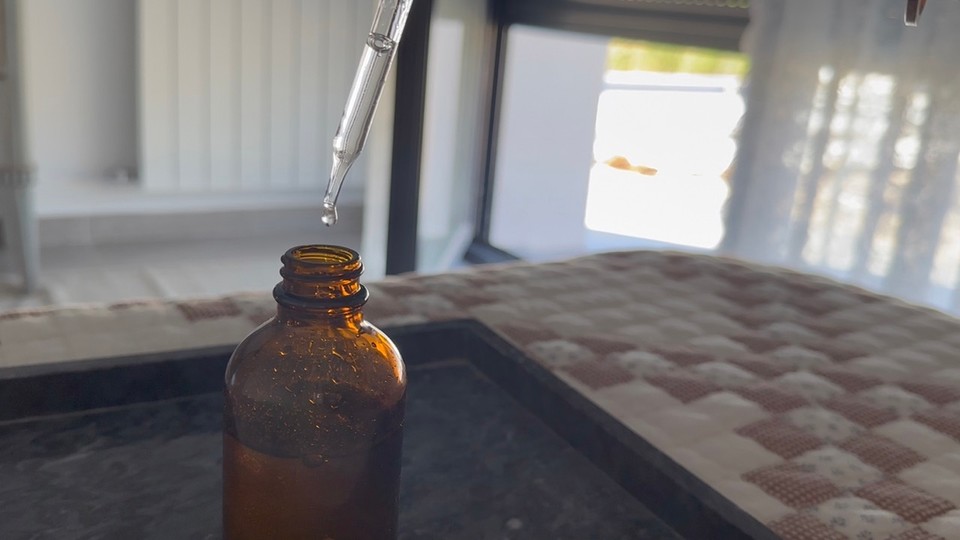
When using a serum with glycolic acid, it is crucial to apply sunscreen during the day. Glycolic acid increases cell turnover, making the skin more sensitive to UV rays. Without proper sun protection, there is a higher risk of sunburn, pigmentation, and other forms of sun damage. SPF helps to protect the skin from these harmful effects, ensuring the benefits of glycolic acid are maximized while minimizing potential risks.
Glycolic acid penetrates the skin to dissolve the bonds between dead skin cells, allowing them to shed easily. This process not only reveals fresher, more vibrant skin but also stimulates collagen production, essential for maintaining skin elasticity and reducing the appearance of fine lines and wrinkles. The deep exfoliation provided by glycolic acid also helps to clear clogged pores, reducing the incidence of acne and other blemishes. Hyperpigmentation, including dark spots, sun spots, and melasma, can be significantly improved using glycolic acid. Its exfoliating action helps to fade these pigmented areas over time, promoting a more even and uniform complexion. Glycolic acid is effective in treating and preventing acne. It helps to unclog pores by removing dead skin cells and reducing sebum buildup, which can lead to acne breakouts.
In this formula, citric acid, another member of the AHA family, complements glycolic acid by adjusting the serum's pH to an optimal level. This ensures that the glycolic acid works effectively. Citric acid also provides mild exfoliation and helps to brighten the skin, enhancing the serum's overall effectiveness.
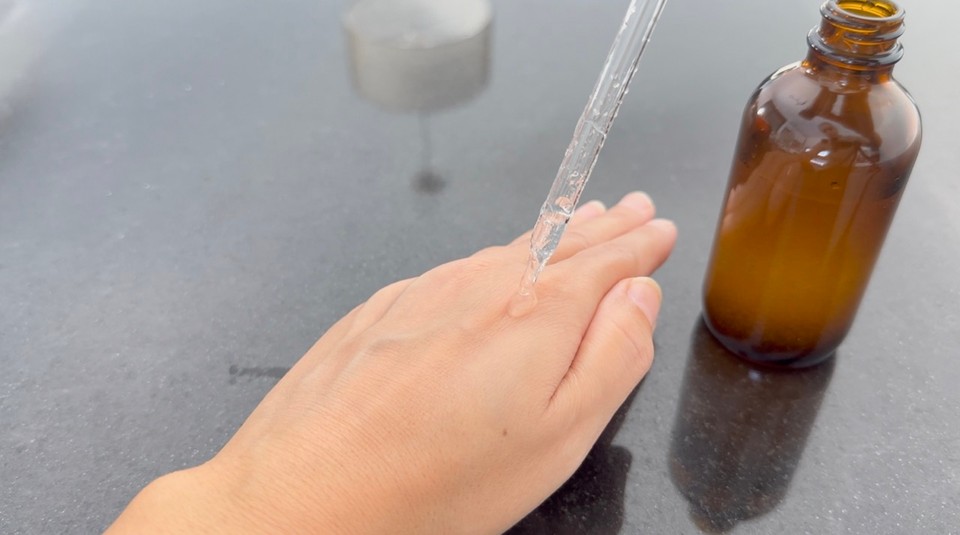
Propanediol, derived from corn sugar, is an excellent humectant and solvent that improves the texture and absorption of the serum. It works synergistically with other humectants like glycerin to draw moisture into the skin, ensuring it remains hydrated and supple even as the glycolic acid exfoliates the surface. You can use aloe vera extract to replace it.
Trehalose, a sugar derived from plants like mushrooms and seaweed, is a potent hydrator and antioxidant. It protects the skin from dehydration and environmental stressors, which is particularly important when using exfoliating acids that can sometimes leave the skin feeling stripped. Trehalose's ability to retain moisture ensures that the skin remains plump and healthy, counteracting the potential drying effects of glycolic acid. You can use Inulin or Betaine to replace it.
Panthenol, also known as provitamin B5, is a well-known moisturizer and skin conditioner derived from plants or synthesized for cosmetic use. It penetrates deeply into the skin, providing long-lasting hydration and helping to repair the skin barrier. This makes it an excellent complement to glycolic acid, as it soothes and calms the skin, reducing the risk of irritation and inflammation that can sometimes accompany the use of potent exfoliants. You can replace it with Sodium PCA.
Penetelyn glycol, a natural glycol derived from sugar and corn, enhances the serum's absorption, allowing the active ingredients to penetrate more deeply and effectively into the skin. Its humectant properties also contribute to maintaining the skin's moisture balance, ensuring that the exfoliating action of glycolic acid does not lead to dryness.You can use Butylene Glycol, Propylene Glycol or Sorbitol if you don’t have Penetelyn glycol.
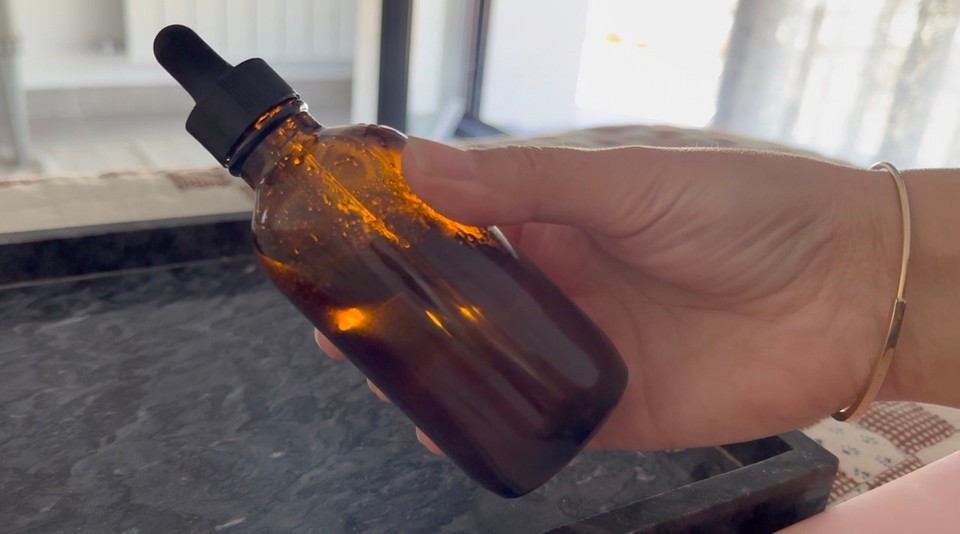
Sodium gluconate is a chelating agent derived from glucose that helps stabilize the serum. It binds to metal ions that can destabilize the formula, ensuring that the serum remains effective over time. Additionally, sodium gluconate has moisturizing properties. You can replace it with Disodium EDTA but you will need to adjust the amounts. If you use Disodium EDTA use 0.1% and add the difference of 0.2% to the distilled water. If you can't get a chelating agent, skip this ingredient and add the amount to the distilled water. A quick note on Chelating agents: they are essential ingredients in many skincare formulations, including face creams. Their primary role is to bind and neutralize metal ions, such as iron, calcium, and magnesium, which can be present in both the water and raw materials used in the formulation. These metal ions can have several negative effects on the stability and efficacy of the product. Metal ions can catalyze oxidative reactions, leading to the degradation of active ingredients, such as antioxidants, vitamins, and oils. Chelating agents bind to these metals, preventing them from destabilizing the formula and extending the product's shelf life. Chelating agents can enhance the effectiveness of preservatives by preventing metal ions from interfering with their activity. Without chelating agents, metal ions can cause the product to discolor, develop an unpleasant odor, or separate, leading to a compromised product that may be less effective or aesthetically pleasing.
When you make DIY skin care products and cannot find a chelating agent to add to your products, there are a few actions you can take to help maintain the stability and quality of your formulation:
Always use distilled water (Distilled water is free of impurities, including metals).
Choose high-quality, well-refined oils and ingredients that are less likely to contain metal contaminants.
Incorporate antioxidants like Vitamin E, Grapefruit extract or Green Tea extract into your formula. While they're not a direct replacement for a chelating agent, these antioxidants play a crucial role in slowing down the degradation process.
The formula may have a shorter shelf life without a chelating agent. Making smaller batches of the product ensures it is used up while still fresh and effective.In general, for DIY products, it is recommended to make small batches and use up the product after three months.
Protect the product from light, heat, and air exposure, which can accelerate the degradation of the formulation. Using airtight, dark-colored containers can help extend the product's shelf life.
Monitor the pH and visual appearance of the cream over time. If you notice any significant changes in color, smell, or texture, it may be a sign that the product is beginning to degrade.
I used Rokonsal as a preservative (that works best at pH 5 or lower). If you use another preservative, use it according to the supplier's instructions. If you need to use 1% of your chosen preservative, reduce 0.2% from the distilled water to adjust the formula. Ensure your chosen preservative can perform in the final pH of the product.
The final pH should be 4. Glycolic acid's efficacy is pH-dependent. A lower pH (below 3.5) might increase the potency but also the risk of irritation, while a higher pH (above 4.5) can reduce its exfoliating effectiveness. At a pH of 4, glycolic acid can penetrate the skin effectively without causing excessive irritation. If you need to adjust the final pH of the serum, you can find the information on pH adjustments here.
To use this serum:
Make a patch test before using it regularly. Introduce the serum gradually, starting a few times a week and slowly increasing frequency as your skin adapts. Apply glycolic acid serum in the evening after cleansing. Follow with a moisturizer to hydrate and protect the skin barrier. Be cautious when using glycolic acid alongside other potent actives, such as retinoids or vitamin C, as this can increase the risk of irritation. Glycolic acid is generally considered safe in low concentrations during pregnancy, typically up to 10%. However, before incorporating glycolic acid or any other active ingredient into your skincare routine during pregnancy, it is crucial to consult with your healthcare provider.
It is recommended to store the serum in a dark glass bottle and away from heat. Glycolic acid and many other active ingredients in serums are sensitive to light. Exposure to sunlight can degrade these ingredients, reducing their effectiveness and potentially altering the serum's chemical composition. Dark glass bottles, such as amber or cobalt blue, help to protect the contents from UV and visible light, preserving the stability and efficacy of the serum. High temperatures can accelerate the degradation of active ingredients in your serum, including glycolic acid, panthenol, and other sensitive components. By storing the serum in a cool place, you slow down the chemical reactions that can lead to the breakdown of these ingredients, preserving their efficacy.
Use the calculator to adjust the amount you wish to make.
Method:
- In a beaker, add the glycerin, propanediol and Penetelyn glycol.
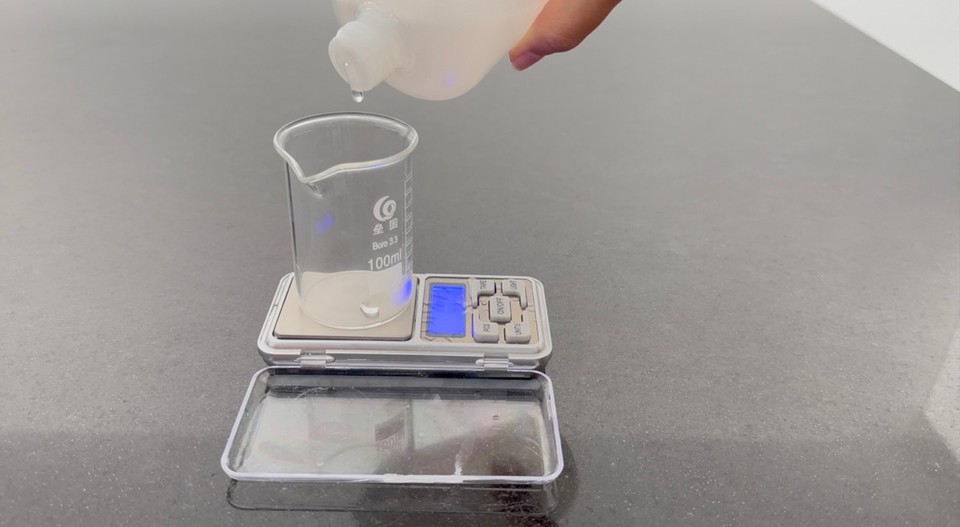

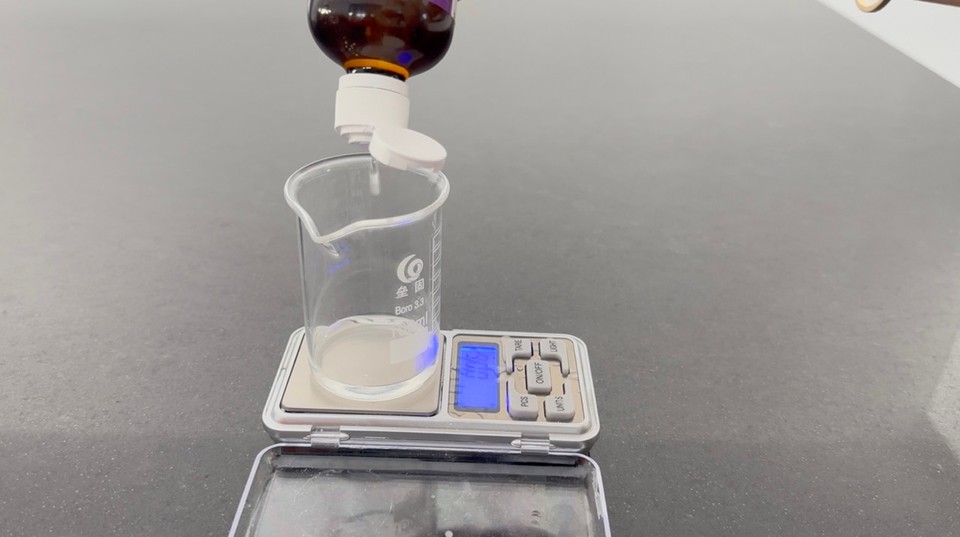
- Add the xanthan gum soft and stir to disperse the gum.

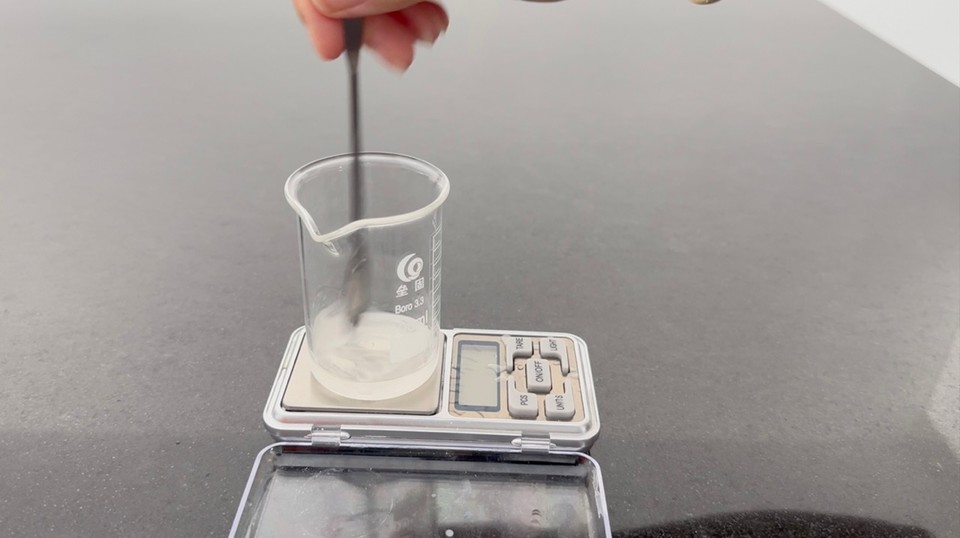
- Add the distilled water and mix.
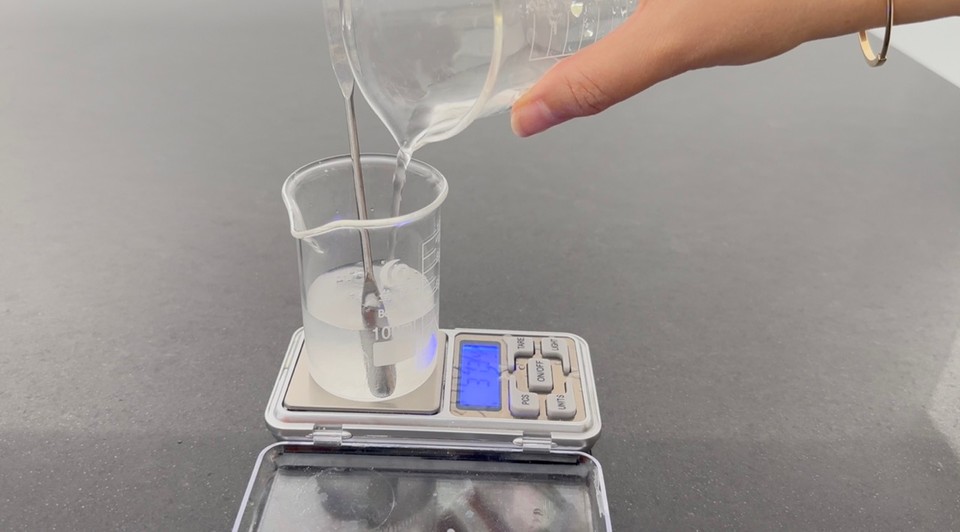
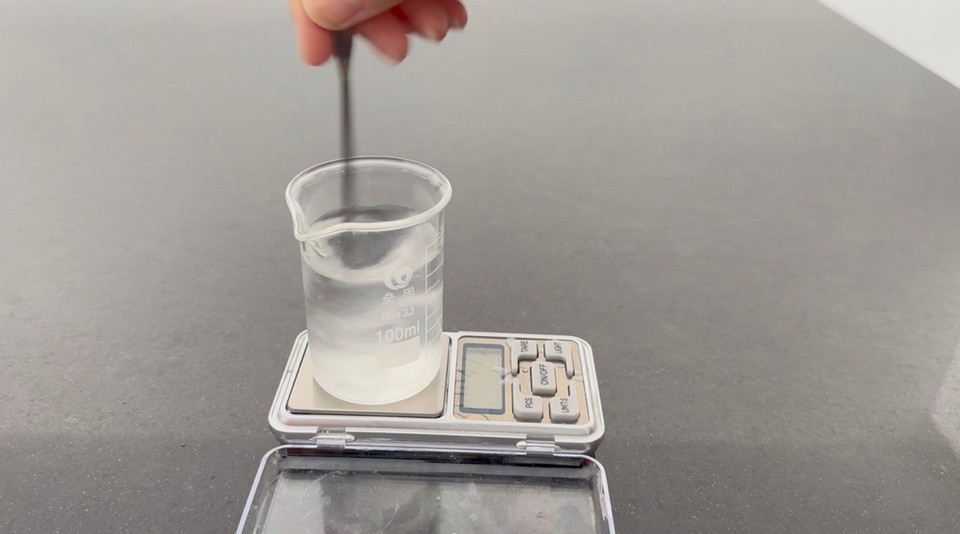
- Add the citric acid and mix.

- Add the glycolic acid and mix.
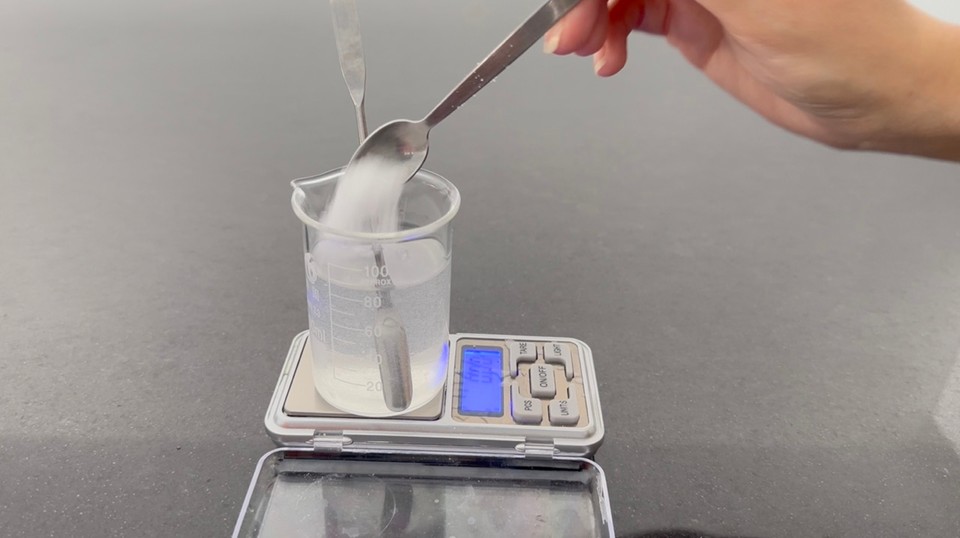
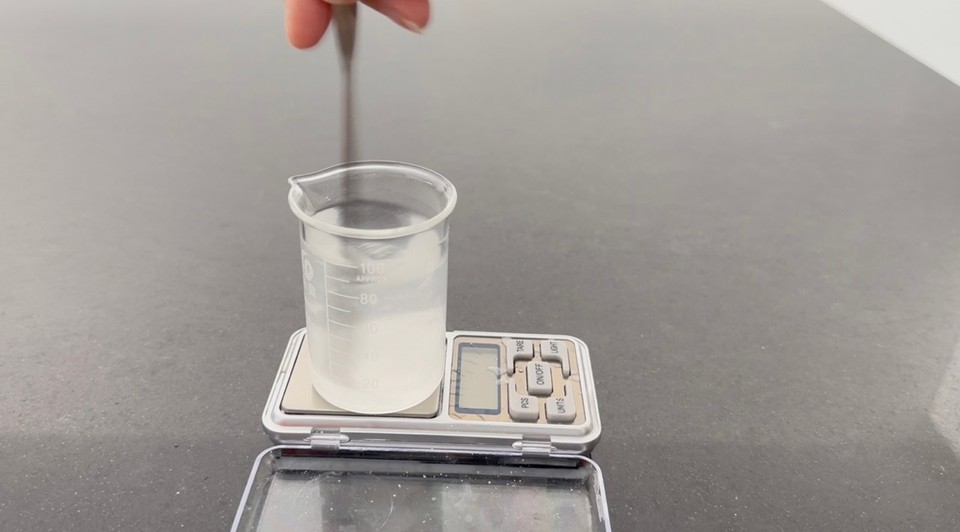
- Add the Trehalosa and the panthenol and mix.
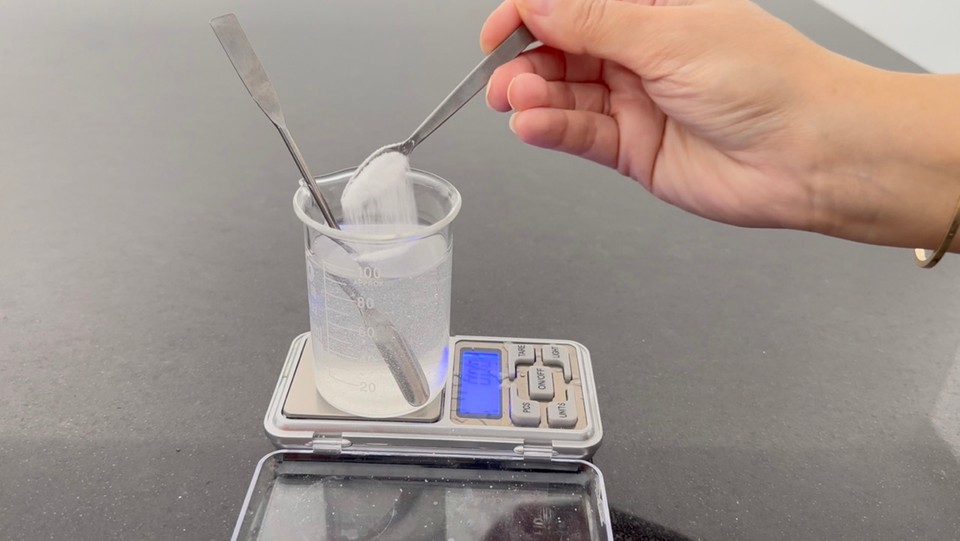
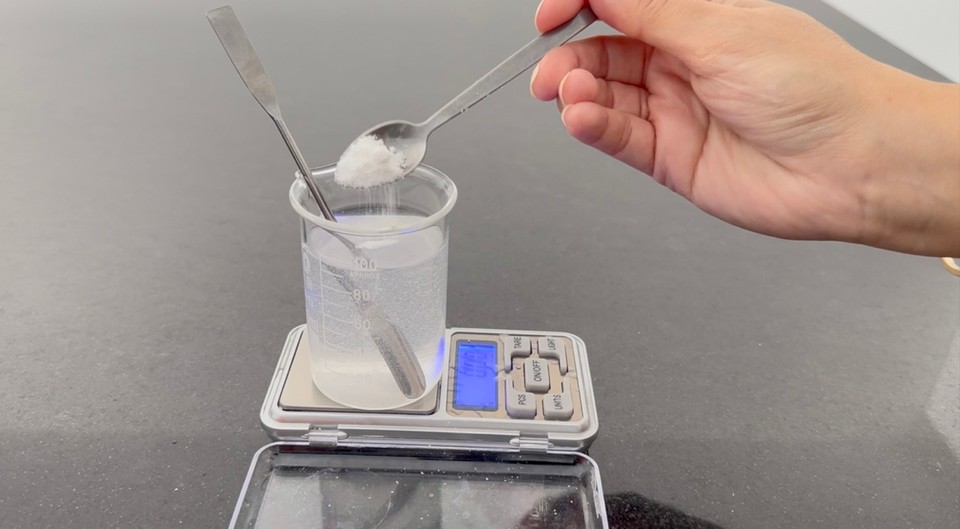
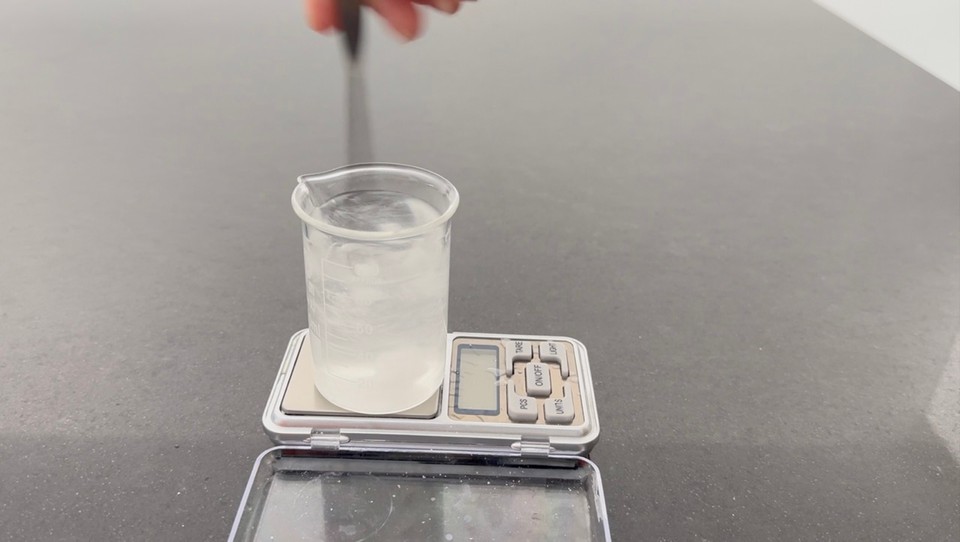
- Add the Sodium Gluconate and mix to combine.
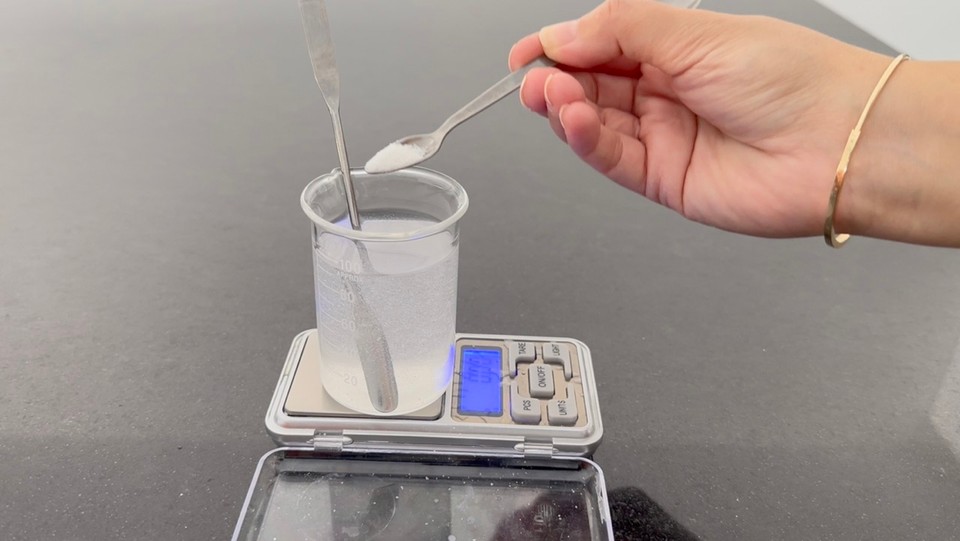
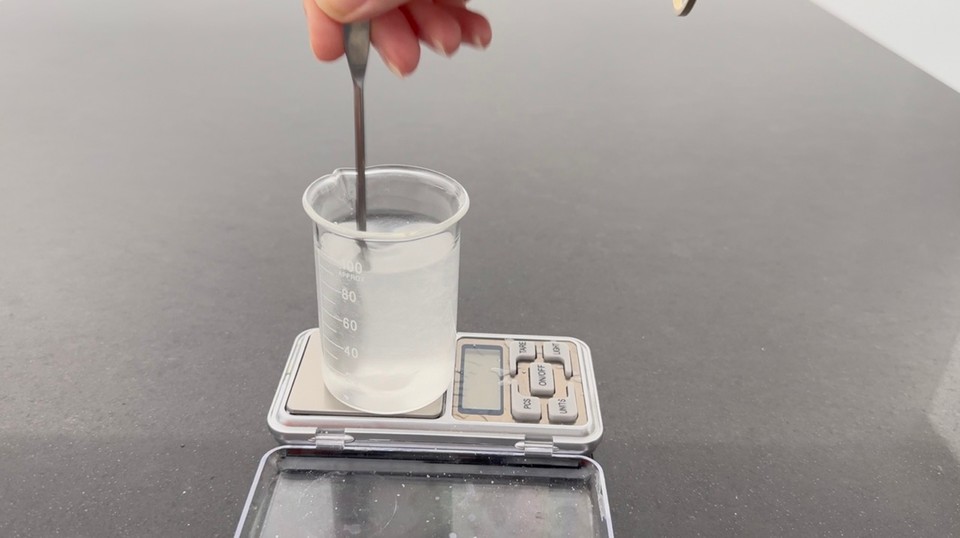
- Add the preservative and mix to combine.
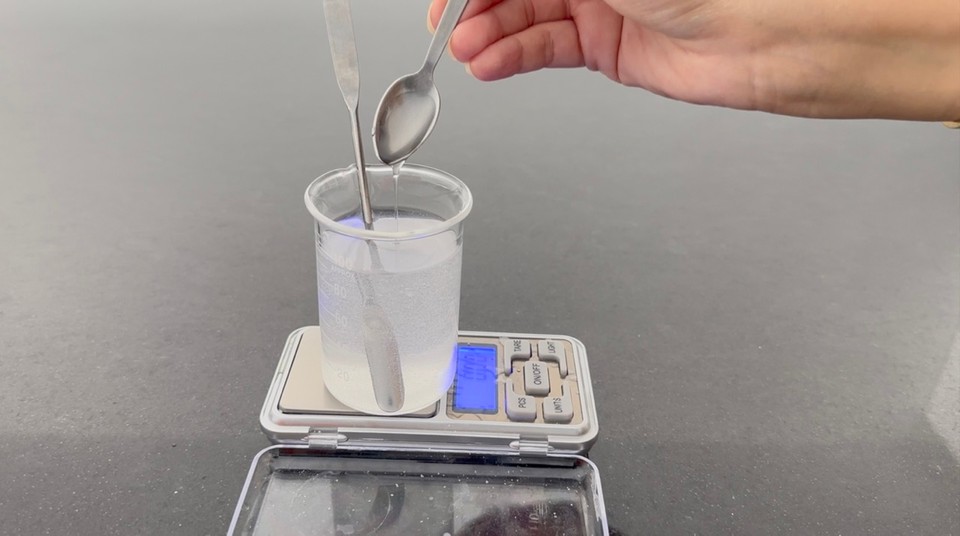
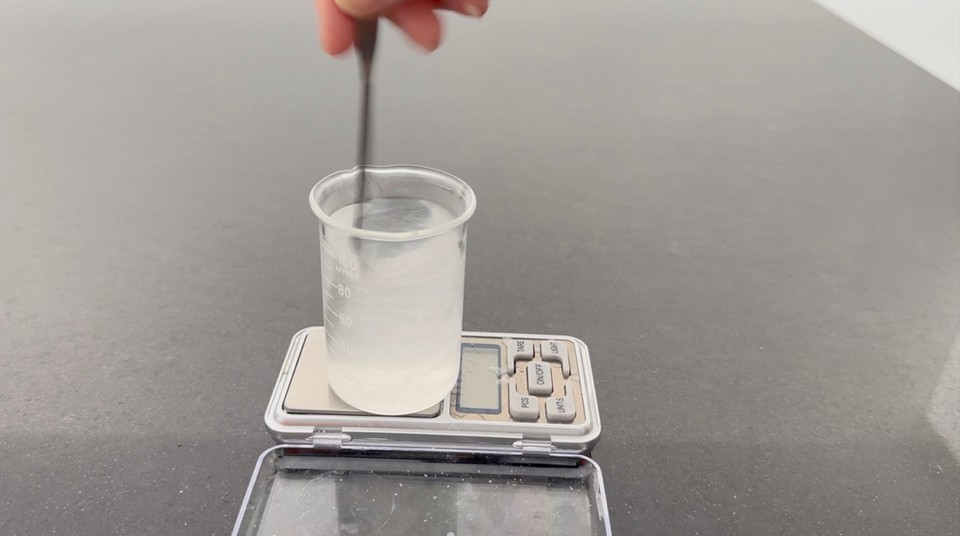
- Check the pH. The final pH should be 4. To read more about pH adjustments, check this post.

- Pour into a dark glass bottle.

